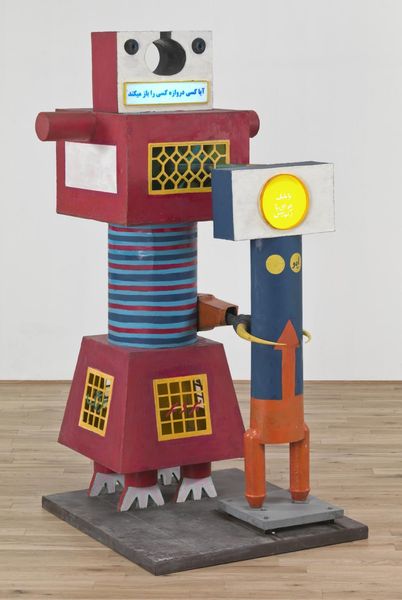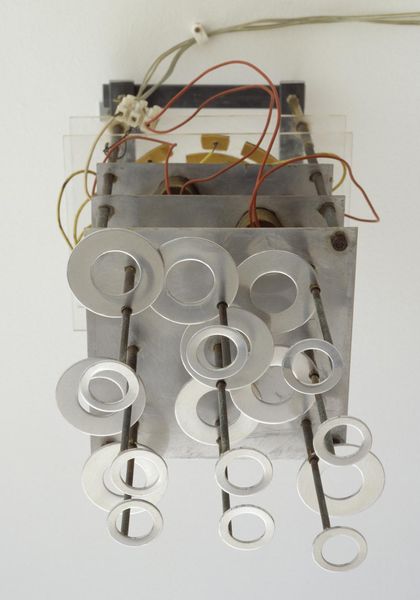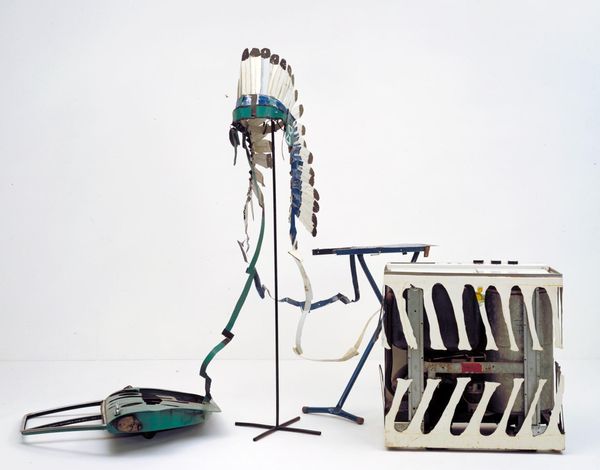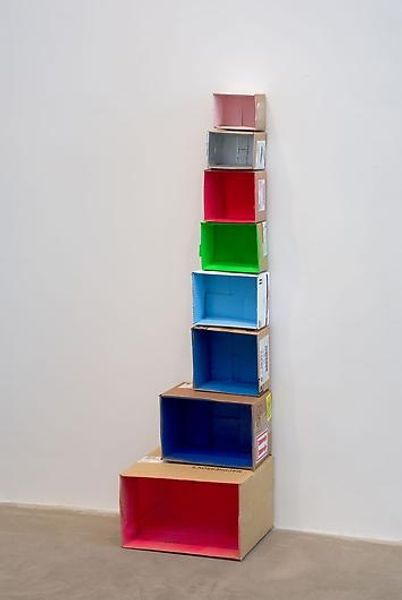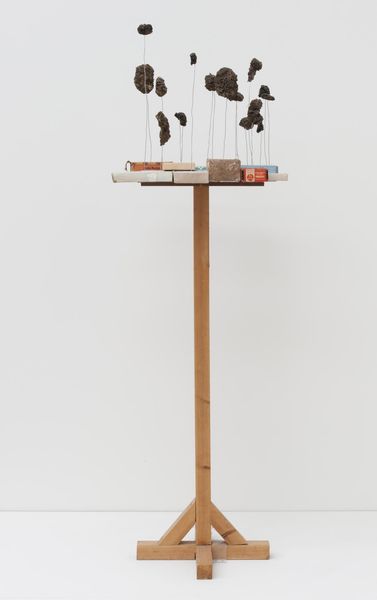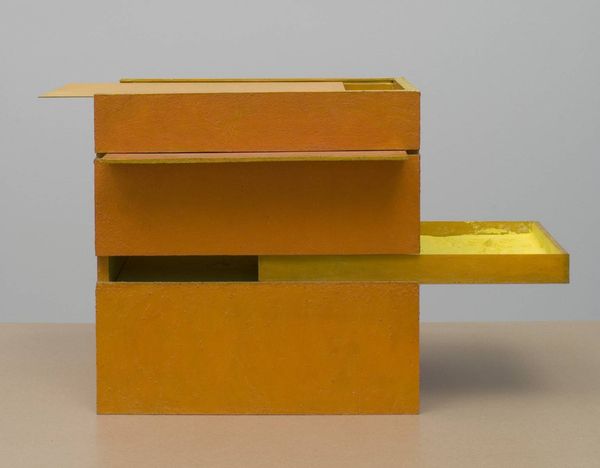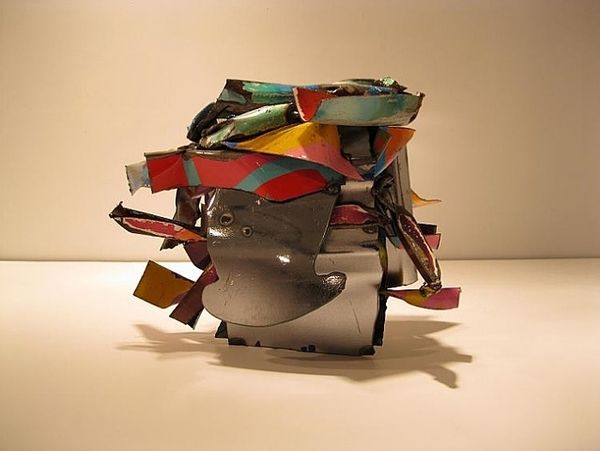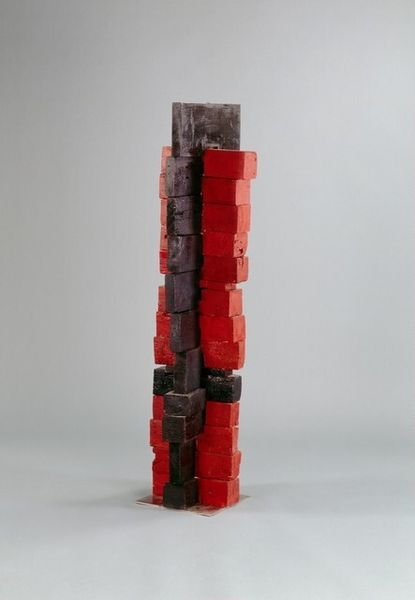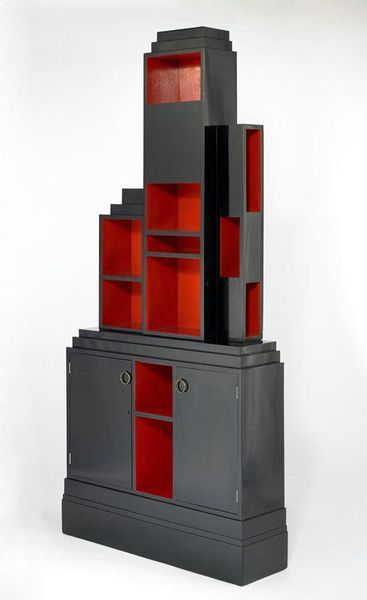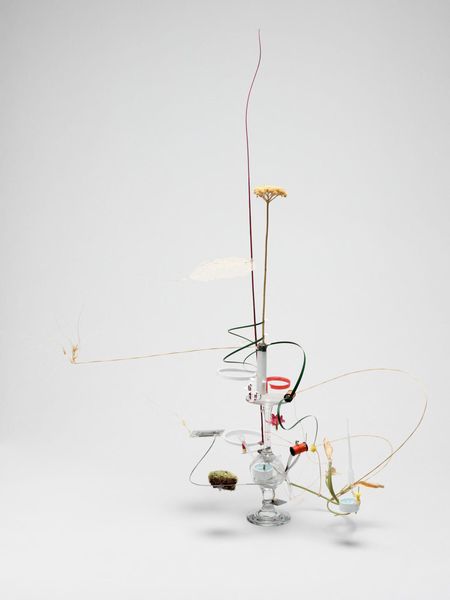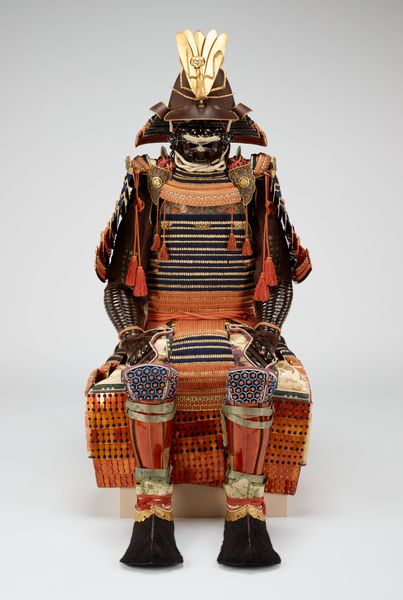
Dimensions: object: 2108 x 1022 x 667 mm
Copyright: © The Eduardo Paolozzi Foundation | CC-BY-NC-ND 4.0 DEED, Photo: Tate
Editor: This is Sir Eduardo Paolozzi's "The City of the Circle and the Square," currently residing in the Tate Collections. Its structure is striking—a combination of geometric forms and vibrant colours. How do you approach such a visually complex piece? Curator: The composition relies heavily on the interplay between primary forms. Observe the rigorous stacking of cubic elements, punctuated by cylindrical accents. Note how the artist orchestrates a visual rhythm through the repetition of squares and circles, a geometric harmony. Editor: The title mentions these shapes directly. Does this simplicity belie a deeper complexity? Curator: Precisely. The title acts as a structural key, drawing attention to the artist's use of elemental forms as a basis for more elaborate architectural constructs. The wheel below, seemingly disconnected, offers a critical counterpoint. Notice its circular dynamism against the static blocks above. Editor: So, the relationships *between* the shapes are as important as the shapes themselves. Curator: Indeed. It is through these formal relationships that Paolozzi constructs meaning. Editor: I see this piece in a new light now, appreciating its geometric logic. Curator: I’m glad I could help unlock another layer of understanding.
Comments
tate 7 months ago
⋮
http://www.tate.org.uk/art/artworks/paolozzi-the-city-of-the-circle-and-the-square-t00638
Join the conversation
Join millions of artists and users on Artera today and experience the ultimate creative platform.
tate 7 months ago
⋮
Paolozzi’s sculpture is part cityscape, part elaborate machine. He describes it as an ‘urban image’. The wheel, a recurring motif in his work, symbolises technology. Instead of using existing pieces of scrap metal, as he had in earlier sculptures, he started from scratch with this work. He designed a series of geometric units made from wax. Then, a team of assistants cast them in aluminium, before welding and painting them according to his instructions. This process, in which the artist is removed from the actual manufacturing, has been called ‘industrial collage’. Gallery label, June 2021
